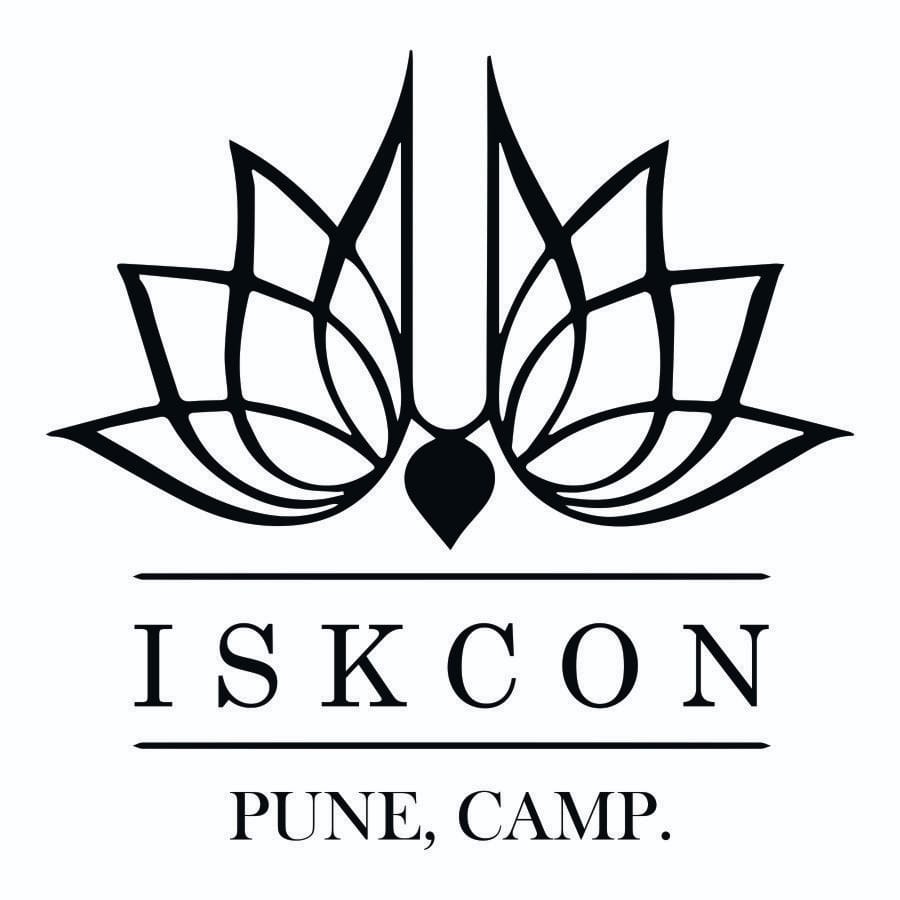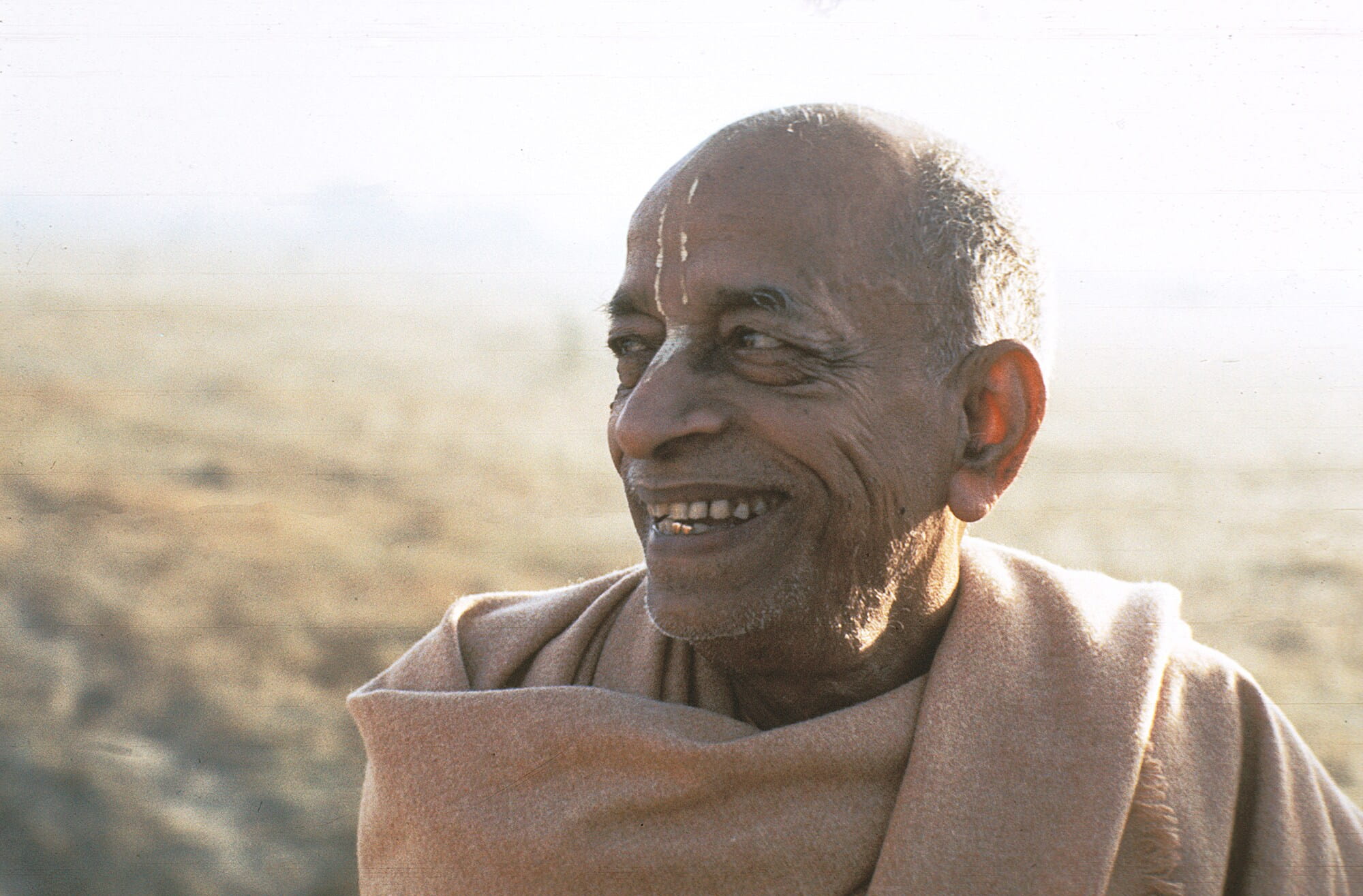Over fifty years ago in September 1965, an elderly Indian monk stepped off the piers of New York harbour wearing orange Indian robes and sporting a dignified vaishnava tilak mark on his forehead. He was carrying just seven dollars, a few sets of clothes and two trunk-loads of books. The aristocratic looking monk was A. C. Bhaktivedanta Swami Prabhupada, who had been sent by his spiritual master from India to preach the message of the Bhagavad-gita to the western world.
In just ten short years, Srila Prabhupada, who came to America almost penniless, established a worldwide community of devotees practising India’s ancient science of bhakti-yoga, wrote 75 books, and established over 108 centres across five continents, that made ‘Hare Krishna’ a household name all over the globe.
The legacy
Behind Srila Prabhupada’s success lay a spiritual tradition that traced its origins to a disciplic succession which had originated more than 5000 years ago. Srila Prabhupada carried with him the essential message of Lord Krishna as given in the Bhagavad-gita: all souls are eternal, and real happiness is found by awakening our loving relationship with the all-attractive Supreme Personality of Godhead.
Srila Prabhupada was a spiritual master in the line of Sri Chaitanya Mahaprabhu, the 16th century saint and avatar, who taught that the best way to awaken our joyful spiritual identity is to chant the names of God, especially the Hare Krishna maha-mantra.
The succession
Sri Chaitanya’s tradition continued through a series of spiritual masters to Srila Bhaktivinoda Thakura, a prominent thinker of Bengali Renaissance, and a leading philosopher, savant and spiritual reformer.
He single-handedly revived the teachings of Lord Chaitanya in India in late 19th and early 20th century. Srila Bhaktivinoda was hailed by contemporary scholars as the most influential Gaudiya Vaishnava leader of his time.
His son, Srila Bhaktisiddhanta Saraswati Thakura carried on the legacy of his father by establishing the Gaudiya Math. It grew to sixty-four branches across India and had three centres abroad.
The mission initiated by Srila Bhaktivinoda and developed by Srila Bhaktisiddhanta emerged as ‘the most powerful reformist movement’ of Vaishnavism in Bengal of the 19th and early 20th century.
Srila Prabhupada met Srila Bhaktisiddhanta Saraswati in 1922, and accepted him as his guru.
The Mission
Srila Prabhupada accepted formal initiation into Gaudiya Vaishnavism from Srila Bhaktisddhanta Saraswati in 1933.
Srila Bhaktisiddhanta Saraswati picked out Srila Prabhupada and instructed him to spread the message of Sri Chaitanya Mahaprabhu in English to the Western world. Once, he requested Srila Prabhupada: “If you ever get money, print books’.
Srila Prabhupada took both of these instructions as his life’s mission. Soon, he started a magazine called Back to Godhead in 1944. He singlehandedly typed, proofread, published and distributed the magazine on the streets of India.
In 1956, he moved to reside in the holy town of Vrindavan, and in 1959, he accepted the renounced order of life, or sannyasa.
Srila Prabhupada set sail for the USA on 13 August 1965, on board the steamship, Jaladuta.
After two heart attacks, illness and sickness, Srila Prabhupada arrived in America on 17 September 1965.
While the ship was docked in Boston Harbour, Srila Prabhupada wrote two poems in which he revealed his prayerful dependence on Lord Krishna for the success of his mission.
In one of his compositions, he appealed to Lord Krishna: “How will I make them (the American public) understand this message of Krishna consciousness? I am very unfortunate, unqualified and most fallen. Therefore I am seeking Your benediction so that I can convince them, for I am powerless to do so on my own.”
The Beginning
Srila Prabhupada initially stayed in Butler, and later moved to New York in 1966. Many ‘hippies’ flocked to hear his teachings.
He finally set up a store-front centre at 26, Second Avenue. On 13 July 1966, he incorporated the ‘International Society for Krishna Consciousness’ (ISKCON). In August 1966, Srila Prabhupada led the first public chanting of the Hare Krishna Mahamantra.
In 1966, Srila Prabhupada established the ISKCON Press to publish Gaudiya Vaishnava literature. In 1967, he travelled to San Francisco where the Hare Krishna mantra was sung at the Mantra Rock Dance.
He also organised the first ever Jagannatha Ratha Yatra in San Franciso. In 1968, Macmillan published Srila Prabhupada’s Bhagavad-gita commentary
In the same year, Srila Prabhupada sent three married couples to London, where they met the Beatles in 1969.
Apple Records released the Hare Krishna mantra, which sold 70,000 copies on the first day, and appeared on Top of the Pops. Srila Prabhupada visited London in 1969, and stayed at John Lennon’s estate.
The expansion
By 1970, Srila Prabhupada had established temples in USA, UK, India, parts of Asia, South America and Australia. In 1970, Srila Prabhupada returned to India with his Western disciples.
Srila Prabhupada had elaborate plans for India upon his return. He established several centres in India including major temples in Mumbai, Vrindavan and Mayapur.
In 1971, Srila Prabhupada visited Russia and initiated a young man as his disciple.
Later Srila Prabhupada established the Governing Body Commission to manage the affairs of ISKCON.
Srila Prabhupada left this world in November 1977. By then he had:
-
Established over a hundred temples and farm communities
-
Travelled the world seven times
-
Initiated over five thousand disciples
-
Written over 80 books
-
Founded the world’s largest publishing and distributing house for Vedic literature - Bhaktivedanta Book Trust (BBT)
-
Started the world’s largest vegetarian food relief programme
-
Introduced Indian festivals and culture such as Ratha Yatra to scores of Western cities around the world
-
Initiated the concept of ‘simple living and high thinking’ through several farm communities around the world
It was Srila Prabhupada who fulfilled a prediction made by Lord Chaitanya 500 years ago that ‘in every town and village’ the holy name of Krishna will be heard.
The explosion
Srila Prabhupada’s disciples carried on the Founder’s vision by continuing to expand his movement under the guidance and instructions he had left behind.
In the fifty years since 1966, ISKCON has achieved many milestones, as given below:
650 – the number of ISKCON centres, temples and schools worldwide
520 million – the number of books and magazines published by Bhaktivedanta Book Trust and distributed by ISKCON devotees worldwide
3 billion – the number of free plates of sanctified vegetarian meals distributed worldwide since 1966
18 million – the number of people who worship in ISKCON temples around the world, every year
1.2 million – the number of meals distributed every day to needy school children in India by ISKCON Food Relief Foundation, also known as ‘Annamrita’ as part of the Government’s mid-day meal programme
340,000 – the number of patients treated by ISKCON hospitals such as Bhaktivedanta Hospital in Mira Road, the Bhaktivedanta Hospice in Vrindavan, mobile clinics and eye camps
260,000 – 2.6 million devotees walked 260,000 kms visiting 52,000 towns and villages in 170 countries as part of the worldwide padayatra to bring the holy name to every town and village around the world
100,000 – since 1966 over 100,000 devotees around the world have taken spiritual initiation into the Gaudiya tradition
6000 – there are more than 6000 Hare Krishna festivals held every year around the world
3600 – the number of home study groups (Bhakti Vriksha groups) around the world
110 – the number of Hare Krishna restaurants around the world
65 – the number of eco-friendly farms run by ISKCON to practice ‘simple living and high thinking’

